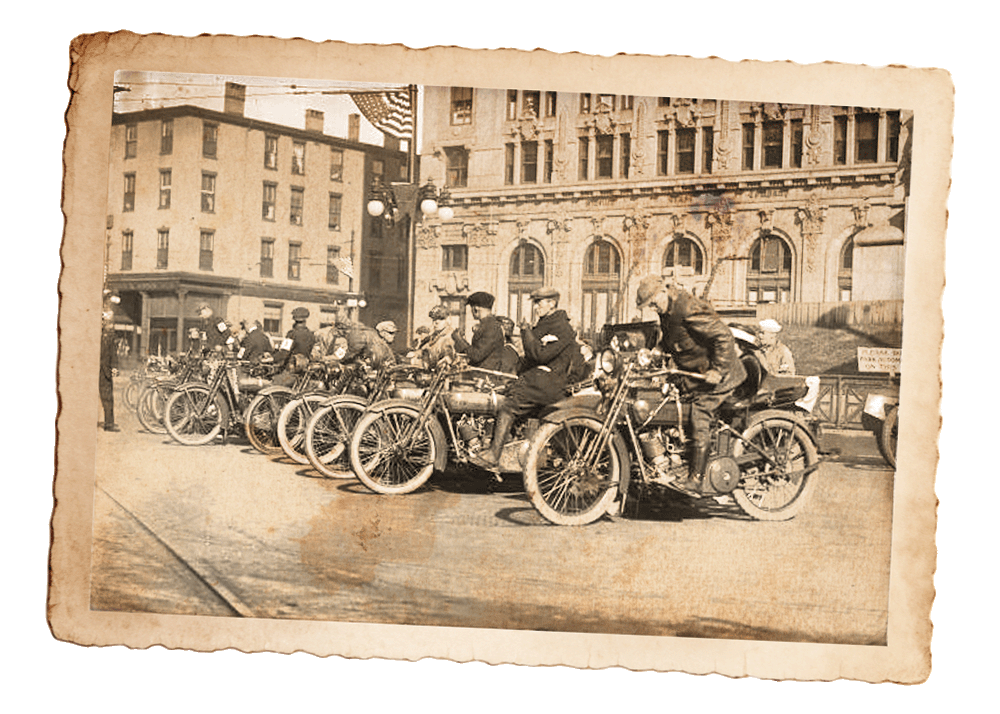The Motorcycle Boom
Following the invention of the motorcycle in 1885, hundreds of motorcycle companies began popping up all around the world between 1890 - 1930, especially in the United States. The demand for two-wheelers was rapidly increasing due to a growing economy, an increase in industrial resources, as well as a growing immigrant labor force.
Although the main focus in manufacturing motorcycles was initially affordable transportation, that soon changed as Henry Ford made the automobile a practical option. Nevertheless, motorcycles as a means of recreational use gained momentum, as the need for speed and solo riding persisted.
The Big Three
Three large companies come to mind that reigned supreme in the early 1890s, also referred to as The Big Three: Harley-Davidson, Indian, & Excelsior, but only two would survive The Great Depression.
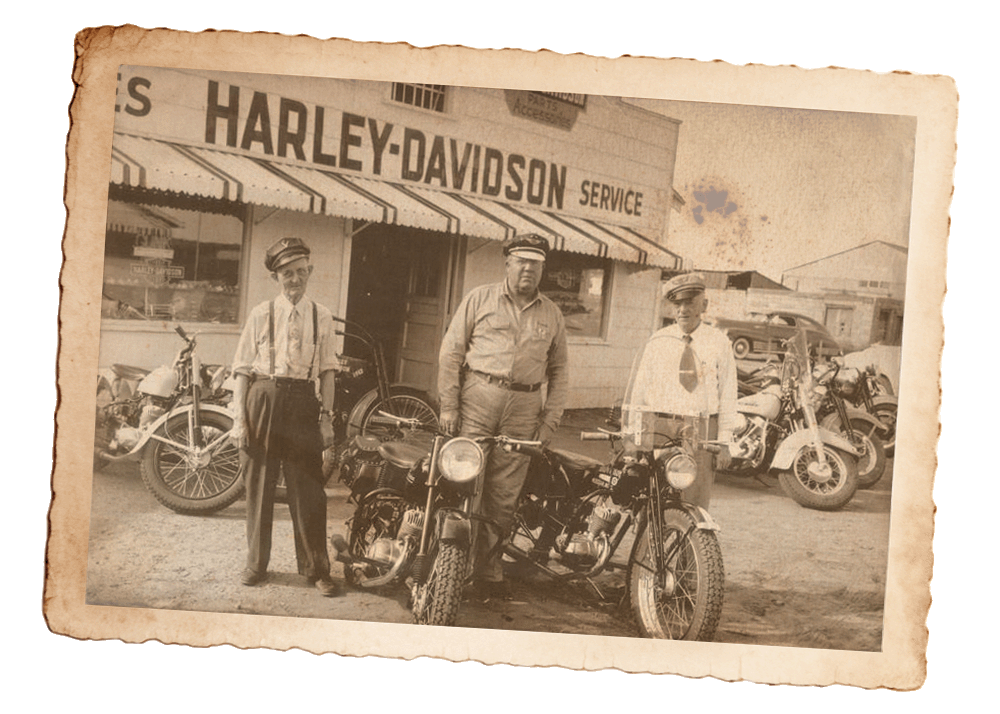
Harley-Davidson
William Harley and the Davidson brothers (Arthur, William, and Walter) formed the Harley-Davidson Motor Company in 1903 after a couple of experimental prototypes landed them with a successful motorcycle. They decided to build a factory in 1906, and within two years, they were able to produce about 200 motorcycles. By 1910, they were producing ¼ of what Indian was able to produce, but the race was on.
As the U.S. entered World War I in 1917, the military demanded motorcycles, and Harley produced 20,000 motorcycles for the war effort. During that time, Harley also introduced a line of bicycles - a men’s model, a step-through ladies’ model, and a youth model - in hopes to attract domestic customers, but ultimately, the bicycle line was discontinued in 1923 due to disappointing sales.
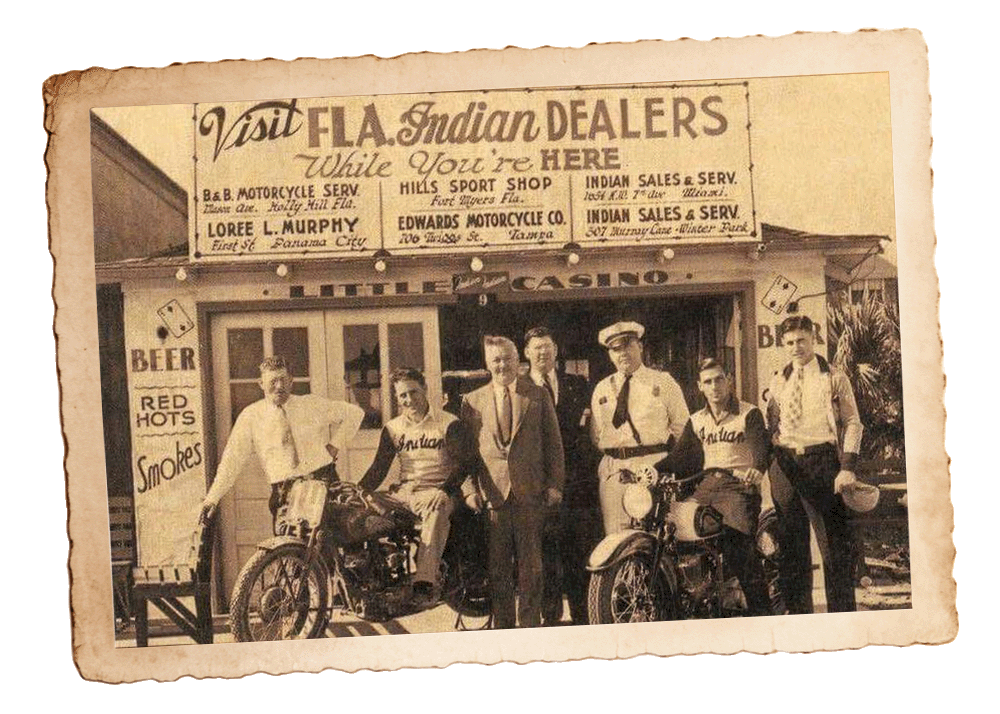
Indian
George Hendee founded the Hendee Manufacturing Company in 1897 producing bicycles known as the “Silver King” and “Silver Queen”. Though Hendee ended up changing the name to “American Indian” (which was quickly shortened to just “Indian”) due to higher recognition in export markets.
Oscar Hedstrom partnered with Hendee in 1900; the duo were both bicycle racers, though George was more entrepreneurial in nature and Oscar more designer/engineer-oriented, which made them ideal partners. Hendee and Hedstrom went on to produce 3 prototypes before producing a motorcycle with a single-cylinder engine. A public demonstration of the first Indian prototype was held in Springfield, MA (Hendee’s hometown) on June 1, 1901. After a few design tweaks, the first Indian Singles went into production and were sold to the public in 1902.
What happened next are a couple of successful decades of wild growth, and in 1923, the company changed its name to The Indian Motocycle Company (no “r” in “Motocycle”).
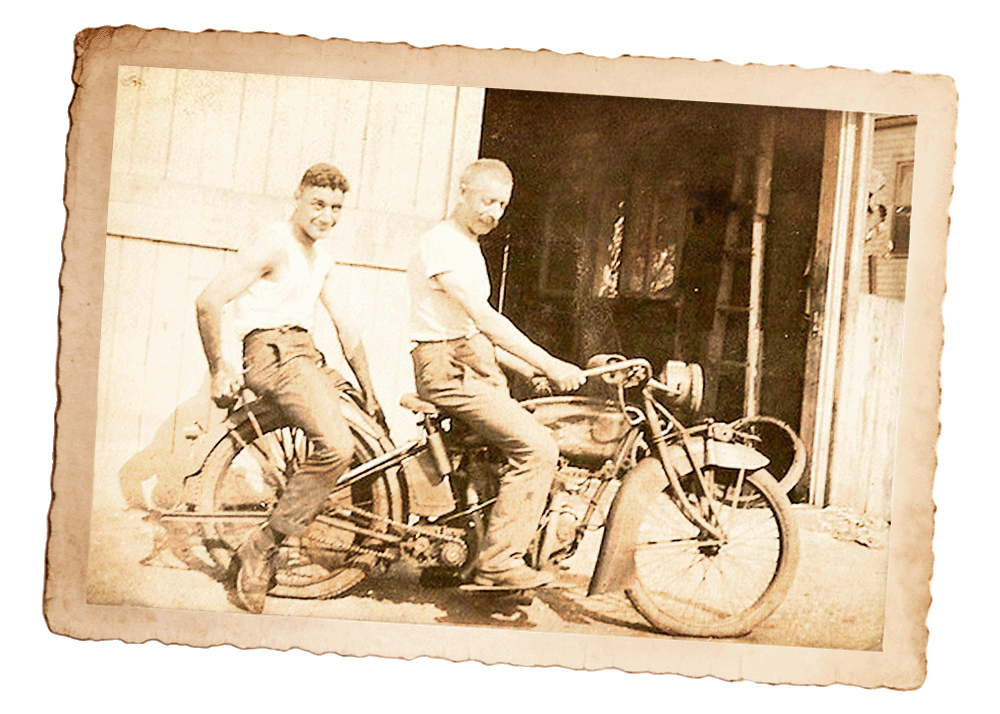
Excelsior
While Indian’s intent was to capture the sportsman market, and Harley was focused on reliability, Excelsior aspired to cover both markets. They even hired some of the top riders in the racing industry to compete against Harley and Indian, as motorcycle racing had grown in popularity.
Eventually, in an attempt to combat plummeting bicycle sales, the bicycle company, Schwinn, would acquire Excelsior in 1912, as well as the motorcycle manufacturer, Henderson, to form Excelsior-Henderson. Schwinn’s new motorcycle division was a major success, and by 1928, was third behind Harley-Davidson and Indian.
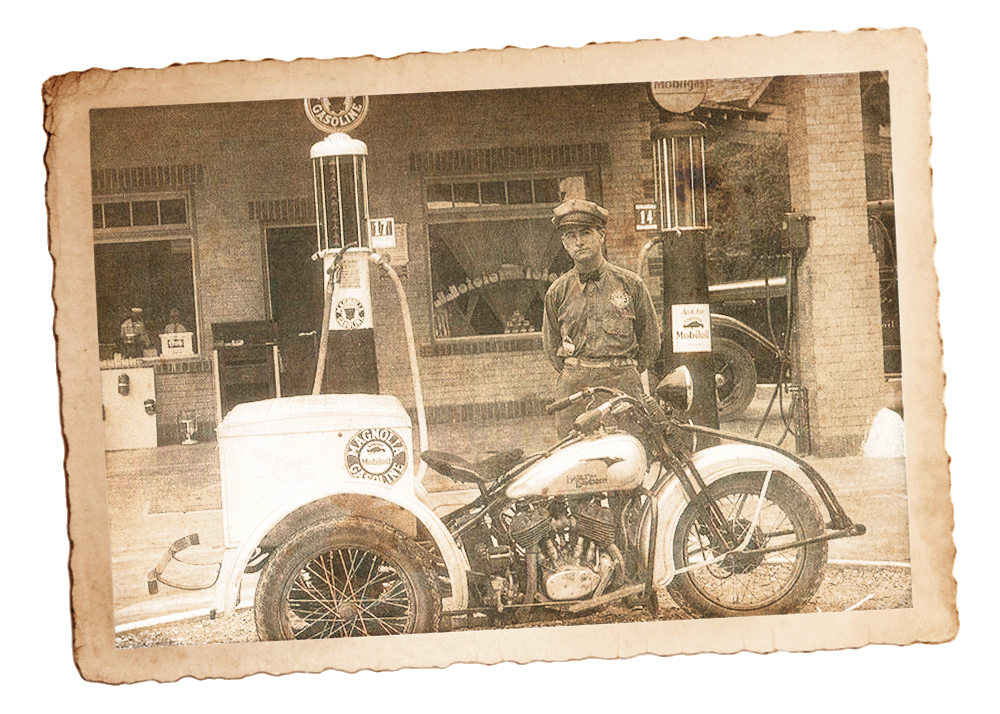
The Great Depression
At the end of the 1920s and early 1930s, severe economic decline decimated the American motorcycle industry. Many motorcycle companies fell on hard times and couldn’t survive the stock market crash. Unfortunately, Schwinn was on the verge of bankruptcy and had to let go of Excelsior-Henderson in 1931. They put all of their company’s resources into bicycles again and were able to develop a low-cost model, which put Schwinn back in business.
Sales of Harley-Davidson motorcycles fell by over 80% in 1933. Despite that, they revealed a new line of Flathead motorcycles in the Art Deco style in 1934. Harley also designed and built the Servi-Car, a 3-wheeled motorcycle, in 1932 (which was manufactured until 1973 and even were popular among police departments into the 1990s!). The Servi-Car was marketed towards the automotive industry and was designed to be towed behind a car. Once the car was delivered to its final destination, the driver would detach the Servi-Car and ride back to the garage.
Harley-Davidson never stopped problem-solving and innovating throughout the 30s and 40s, and they managed to stay afloat despite America’s greatest economic shock.
Indian made significant contributions to the military during both World War I - 40,000 motorcycle were built in comparison to the 26,000 the military’s purchase from Harley. Indian was able to mass-produce motorcycles, bringing down the cost, so the military was able to purchase more, which helped keep them around once the Great Depression hit. Indian even built service centers to teach soldiers how to care for their motorcycles from all 3 of the major US manufacturers.
However, civilians and dealers were let down, as almost all production efforts were going towards the war with little being produced for civilian sales. In contrast, HD was busy recruiting dealers throughout the war. This really hurt Indian as a brand, and they lost the #1 spot of top motorcycle supplier in America.
Harley eventually tapped into the military market as well right around World War II, and the popularity between the two competitors had reversed - Harley ended up selling 60,000 units to the military, where Indian had only sold about half. In the 1940s, Indian was also manufacturing air conditioners, bicycles, boat motors, and aircraft engines.
Unfortunately, despite their survival during the Great Depression, Indian Motorcycles met their demise in 1953. Eventually, Indian would make a comeback, but that’s a story for another time!
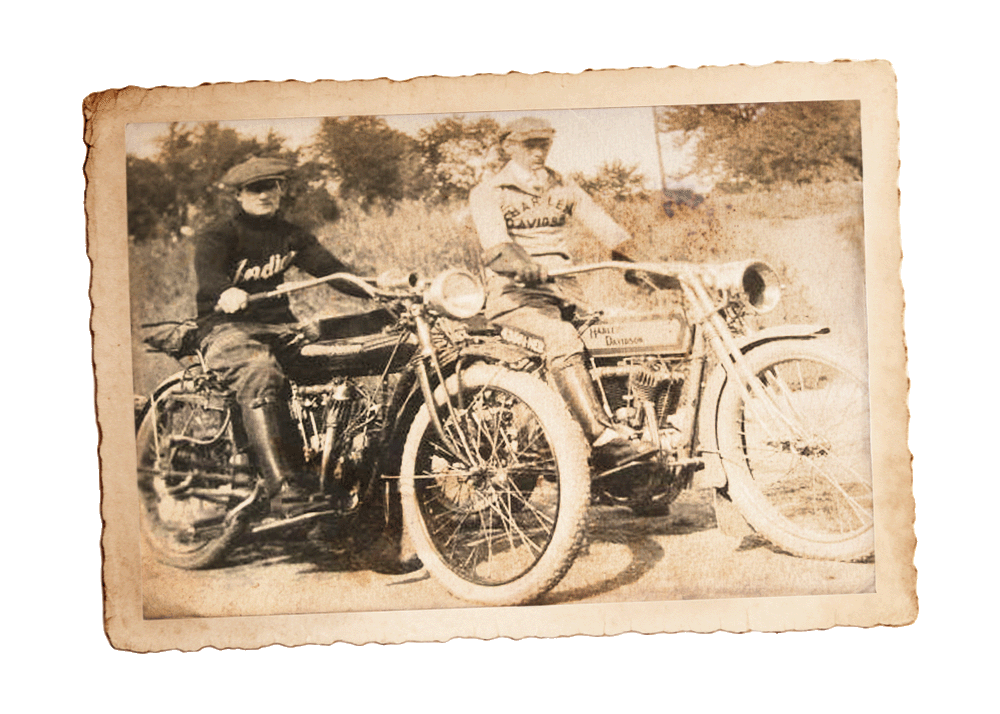
If you enjoy Motorcycle & Powersports Trivia, give us a follow on Facebook and Instagram for more!

